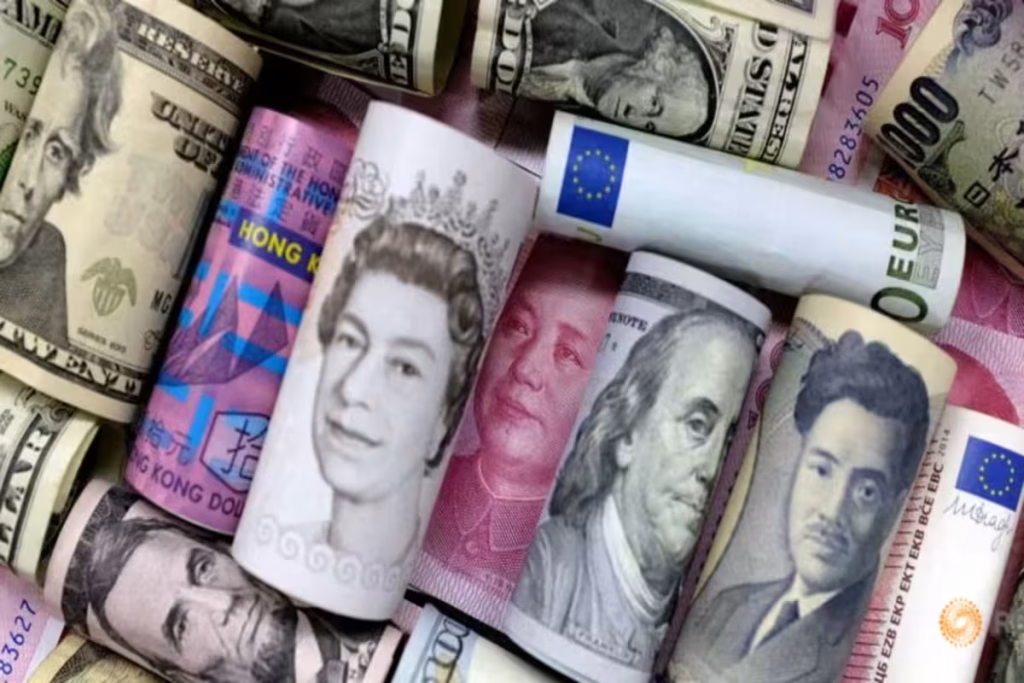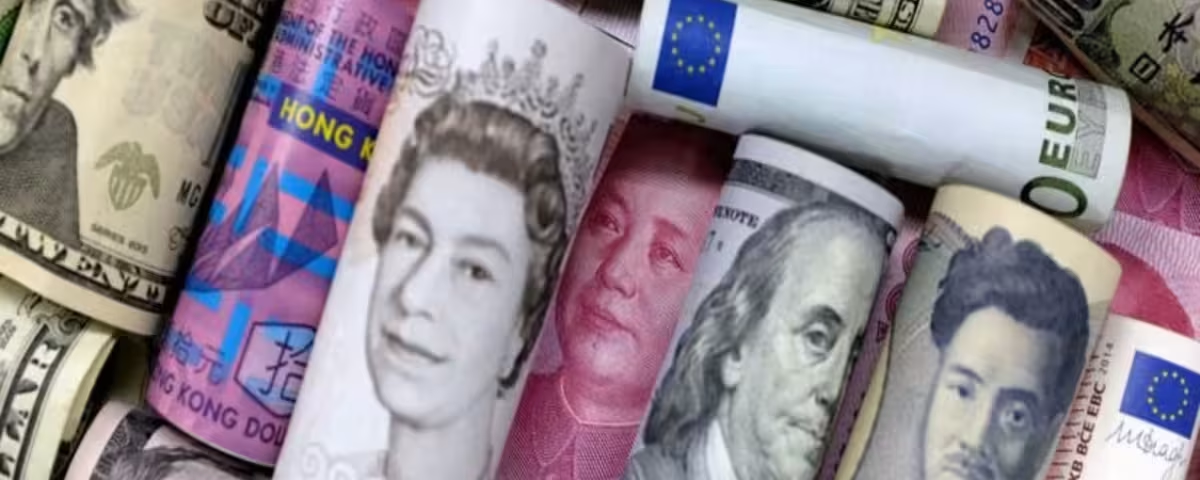
Introduction to Forex Trading: A Comprehensive Guide
09/07/2024
Understanding Forex Quotes: A Comprehensive Guide
11/07/2024The Basics of Currency Pairs: A Comprehensive Guide
Introduction to Currency Pairs
Currency pairs form the foundation of Forex trading. Understanding how they work is essential for anyone interested in trading in the foreign exchange market. This comprehensive guide will explore the basics of currency pairs, their types, how they are quoted, and various strategies to trade them effectively. Whether you’re a beginner or looking to refine your knowledge, this article will provide you with valuable insights into the world of currency pairs.

What are Currency Pairs?
In the Forex market, currencies are always traded in pairs. This means you are simultaneously buying one currency and selling another. A currency pair consists of two currencies: a base currency and a quote currency. The base currency is the first currency listed in the pair, and the quote currency is the second. The value of a currency pair represents how much of the quote currency is needed to purchase one unit of the base currency.
Example of a Currency Pair
Take the EUR/USD currency pair, for example. In this pair, the euro (EUR) is the base currency, and the US dollar (USD) is the quote currency. If the EUR/USD pair is quoted at 1.1200, it means one euro is equal to 1.1200 US dollars. If the price rises to 1.1300, the euro has strengthened relative to the US dollar. Conversely, if the price falls to 1.1100, the euro has weakened relative to the US dollar.
Types of Currency Pairs
Currency pairs are categorized into three main types: major pairs, minor pairs, and exotic pairs. Each category has its own characteristics and trading dynamics.
Major Currency Pairs
Major currency pairs are the most traded pairs in the Forex market. They include the world’s most liquid and widely recognized currencies. The major pairs are:
- EUR/USD (Euro/US Dollar)
- GBP/USD (British Pound/US Dollar)
- USD/JPY (US Dollar/Japanese Yen)
- USD/CHF (US Dollar/Swiss Franc)
- AUD/USD (Australian Dollar/US Dollar)
- USD/CAD (US Dollar/Canadian Dollar)
- NZD/USD (New Zealand Dollar/US Dollar)
These pairs generally have lower spreads and higher liquidity, making them popular among traders.
Minor Currency Pairs
Minor currency pairs, also known as cross-currency pairs, do not include the US dollar but involve other major currencies. Examples of minor pairs are:
- EUR/GBP (Euro/British Pound)
- EUR/AUD (Euro/Australian Dollar)
- GBP/JPY (British Pound/Japanese Yen)
- CHF/JPY (Swiss Franc/Japanese Yen)
Minor pairs typically have higher spreads and lower liquidity compared to major pairs but still offer good trading opportunities.
Exotic Currency Pairs
Exotic currency pairs consist of one major currency and one currency from an emerging or smaller economy. Examples of exotic pairs include:
- USD/TRY (US Dollar/Turkish Lira)
- EUR/SEK (Euro/Swedish Krona)
- GBP/ZAR (British Pound/South African Rand)
- USD/HKD (US Dollar/Hong Kong Dollar)
Exotic pairs generally have higher spreads and lower liquidity, making them more volatile and riskier to trade. However, they can offer significant profit opportunities for experienced traders.
How Currency Pairs are Quoted
Currency pairs are quoted using a bid and ask price. The bid price is the price at which the market is willing to buy the base currency, while the ask price is the price at which the market is willing to sell the base currency. The difference between the bid and ask prices is known as the spread.
Example of a Currency Quote
Consider the EUR/USD pair quoted as 1.1200/1.1203. Here, 1.1200 is the bid price, and 1.1203 is the ask price. If you want to buy euros, you would pay the ask price of 1.1203. If you want to sell euros, you would receive the bid price of 1.1200. The spread in this case is 0.0003, or 3 pips.
Understanding Pips
A pip (percentage in point) is the smallest price movement in a currency pair. For most currency pairs, a pip is equal to 0.0001, except for pairs involving the Japanese yen, where a pip is equal to 0.01. Pips are used to measure price movements and calculate profits or losses in Forex trading.
Pipettes
Some brokers quote currency pairs with an additional decimal place, known as a pipette. This allows for more precise pricing. For example, instead of quoting EUR/USD as 1.1200, a broker might quote it as 1.12005. In this case, the fifth decimal place represents a pipette, or one-tenth of a pip.
Factors Influencing Currency Pair Movements
Several factors influence the price movements of currency pairs. Understanding these factors can help traders make informed decisions and develop effective trading strategies.
Economic Indicators
Economic indicators are statistics that reflect the economic performance of a country. Key indicators include:
- Gross Domestic Product (GDP): Measures the total value of goods and services produced by a country. A strong GDP growth rate typically strengthens a country’s currency.
- Inflation: Measured by the Consumer Price Index (CPI) or Producer Price Index (PPI). Higher inflation can lead to higher interest rates, which can strengthen a currency.
- Employment Data: Indicators such as the Non-Farm Payroll (NFP) report provide insights into the health of the labor market. High employment rates usually strengthen a currency.
- Interest Rates: Central bank interest rate decisions have a significant impact on currency values. Higher interest rates attract foreign investment, increasing demand for the currency.
Political Events
Political stability and events, such as elections, government policies, and geopolitical tensions, can cause significant volatility in the Forex market. Traders closely monitor political developments to anticipate potential market movements.
Market Sentiment
Market sentiment reflects the overall attitude of investors toward a particular currency pair. Sentiment can be influenced by economic data, news events, and market rumors. Positive sentiment generally strengthens a currency, while negative sentiment weakens it.
Central Bank Policies
Central banks, such as the Federal Reserve, the European Central Bank, and the Bank of Japan, play a crucial role in the Forex market. Their monetary policies, including interest rate decisions and quantitative easing programs, directly impact currency values.
Trade Balances
A country’s trade balance, which is the difference between its exports and imports, can influence its currency. A positive trade balance (surplus) indicates more exports than imports, which can strengthen the currency. Conversely, a negative trade balance (deficit) can weaken the currency.
Forex Trading Strategies for Currency Pairs
Developing a trading strategy is essential for success in the Forex market. Here are some popular strategies used by traders to trade currency pairs:
Trend Following Strategy
Trend following is a strategy that involves identifying and trading in the direction of the prevailing trend. Traders use technical analysis tools, such as moving averages and trend lines, to identify trends and potential entry and exit points.
Range Trading Strategy
Range trading involves identifying currency pairs that are trading within a defined range and buying at the support level and selling at the resistance level. Traders use technical indicators, such as the Relative Strength Index (RSI) and Bollinger Bands, to identify overbought and oversold conditions.
Breakout Strategy
A breakout strategy involves identifying currency pairs that are likely to break out of a defined range or chart pattern, such as a triangle or rectangle. Traders enter positions when the price breaks above resistance or below support, anticipating a significant price movement.
Carry Trade Strategy
A carry trade strategy involves borrowing a currency with a low-interest rate and using the funds to buy a currency with a higher interest rate. The goal is to profit from the interest rate differential. This strategy is best suited for stable market conditions and can be risky during periods of high volatility.
News Trading Strategy
News trading involves trading currency pairs based on the release of economic data and news events. Traders closely monitor economic calendars and news reports to anticipate market reactions. This strategy requires quick decision-making and a good understanding of market fundamentals.
Risk Management in Forex Trading
Risk management is a crucial aspect of Forex trading. Effective risk management helps protect your capital and minimize losses. Here are some essential risk management practices:
Setting Stop-Loss Orders
A stop-loss order is an order placed with a broker to sell a currency pair when it reaches a specific price. This helps limit potential losses if the market moves against your position. Setting stop-loss orders for each trade is a key risk management practice.
Using Take-Profit Orders
A take-profit order is an order placed with a broker to sell a currency pair when it reaches a specific price, securing your profits. Take-profit orders help lock in gains and prevent greed from affecting your trading decisions.
Position Sizing
Position sizing involves determining the amount of capital to risk on each trade. A common rule is to risk no more than 1-2% of your trading capital on a single trade. This helps manage risk and prevent significant losses.
Diversifying Your Trades
Diversifying your trades involves spreading your risk across multiple currency pairs and not putting all your capital into a single trade. This helps reduce the impact of adverse price movements in any one currency pair.
Keeping a Trading Journal
Maintaining a trading journal helps track your trades, analyze performance, and identify areas for improvement. Recording details such as entry and exit points, position sizes, and the reasons for taking each trade can help you learn from your successes and mistakes.
Choosing a Forex Broker
Selecting the right Forex broker is crucial for successful trading. Here are some factors to consider when choosing a broker:
Regulation
Ensure the broker is regulated by a reputable financial authority, such as the Financial Conduct Authority (FCA), the Commodity Futures Trading Commission (CFTC), or the Australian Securities and Investments Commission (ASIC). Regulation provides a level of security and protection for your funds.

Trading Platform
Evaluate the broker’s trading platform for ease of use, reliability, and available features. Popular trading platforms include MetaTrader 4 (MT4), MetaTrader 5 (MT5), and cTrader. The platform should offer real-time price quotes, advanced charting tools, and a user-friendly interface.
Spreads and Commissions
Compare the spreads and commissions charged by different brokers. Lower spreads and commissions can reduce your trading costs and increase profitability. Some brokers offer commission-free trading with slightly wider spreads, while others charge a commission with tighter spreads.
Customer Support
Assess the quality of customer support offered by the broker. Responsive and knowledgeable customer support can assist you with any issues or questions. Look for brokers that offer multiple support channels, such as live chat, email, and phone support.
Account Types
Check the different account types available and their respective features, such as minimum deposit requirements, leverage options, and additional services. Some brokers offer demo accounts, which allow you to practice trading without risking real money.
Conclusion
Understanding the basics of currency pairs is fundamental for anyone interested in Forex trading. By learning about the different types of currency pairs, how they are quoted, and the factors that influence their movements, you can make more informed trading decisions. Developing a solid trading strategy and implementing effective risk management practices are crucial for success in the Forex market. Additionally, choosing a reputable broker with the right features and support can enhance your trading experience. With dedication and continuous learning, you can navigate the exciting world of currency pairs and achieve your trading goals.
-
The Basics of Currency Pairs: A Comprehensive Guide
The Basics of Currency Pairs: A Comprehensive Guide Introduction to Currency Pairs Currency pairs form the foundation of Forex trading. Understanding how they work is essential […]




